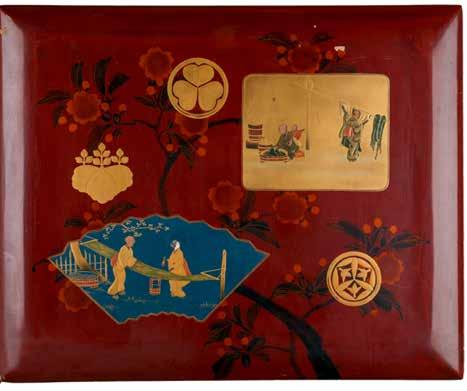Rearmed and dismembered: the samurai in post-war visual culture
Ryan Holmberg
After the Second World War, the samurai, like his country, found himself disarmed. With the fall of the Japanese empire and the commencement of the Allied Occupation of Japan in August 1945, moves were made to dismantle the militarist and ‘feudal’ values that had underpinned Japanese society, in favour of democratic reforms that promised individual freedom and pacifism. Passages in school textbooks that praised self-sacrifice unto death, unquestioned loyalty to one’s male seniors and the moral superiority of the Emperor’s subjects – a modernised samurai ethic – were blacked out in ink until revised editions were issued. Likewise, images of not only samurai, but traditional swashbuckling characters in general, were largely banned from visual culture. The Gordon W. Prange Collection at the University of Maryland, amassed by the Occupation’s Civil Censorship Detachment, contains numerous examples of manga (Japanese comics) featuring samurai, ninja and Edo-era police and thieves wielding blades and slicing through bodies, in which offending images are marked with ‘X’ in wax crayon, and words like ‘VIOLATION’, ‘DISAPPROVED’, or ‘RIGHTIST PROPAGANDA’ are written and stamped on their covers (fig. 1). With the relaxation of press codes and the partial reacceptance of Japan’s military past as part of the nation’s repositioning as a bulwark against perceived communist threats from China and the Soviet Union, the samurai made a roaring comeback in the 1950s, although infused with a new, more naturalistic and contradictory ‘humanity’. Released in 1950, Kurosawa Akira’s (1910–1998) Rashomon, about a cowardly bandit who kills a hapless samurai and assaults his female companion, not only won a Golden Lion at the Venice Film Festival in 1951, it also established the growling, leaping Mifune Toshirō as the paradigm of the charismatic, if crazed, Japanese swordsman in the international imagination for years to come. Seven samurai (1954) cemented Kurosawa’s reputation as the premier auteur of samurai films that were both scintillating and philosophical, offering brash cinematic action, subtle characters and philosophical meditations on military virtue and violence. Children’s comics and adjacent forms such as illustrated fiction, on the other hand, still largely worked with older models. They used the bouncy cartoony forms of pre-war manga to make slapstick-driven samurai adventures, or the naturalistic styles of pre-war magazine illustration to create emonogatari (picture stories, with equal parts image and text), starring coiffed and hooded, blade-wielding heroes solving mysteries and subduing bad guys. 82
fig. 1: TŌge Teppei, Kurama Tengu (Tateyama shobō, Osaka, 1948), cover. Gordon W. Prange Collection, University of Maryland Libraries

















